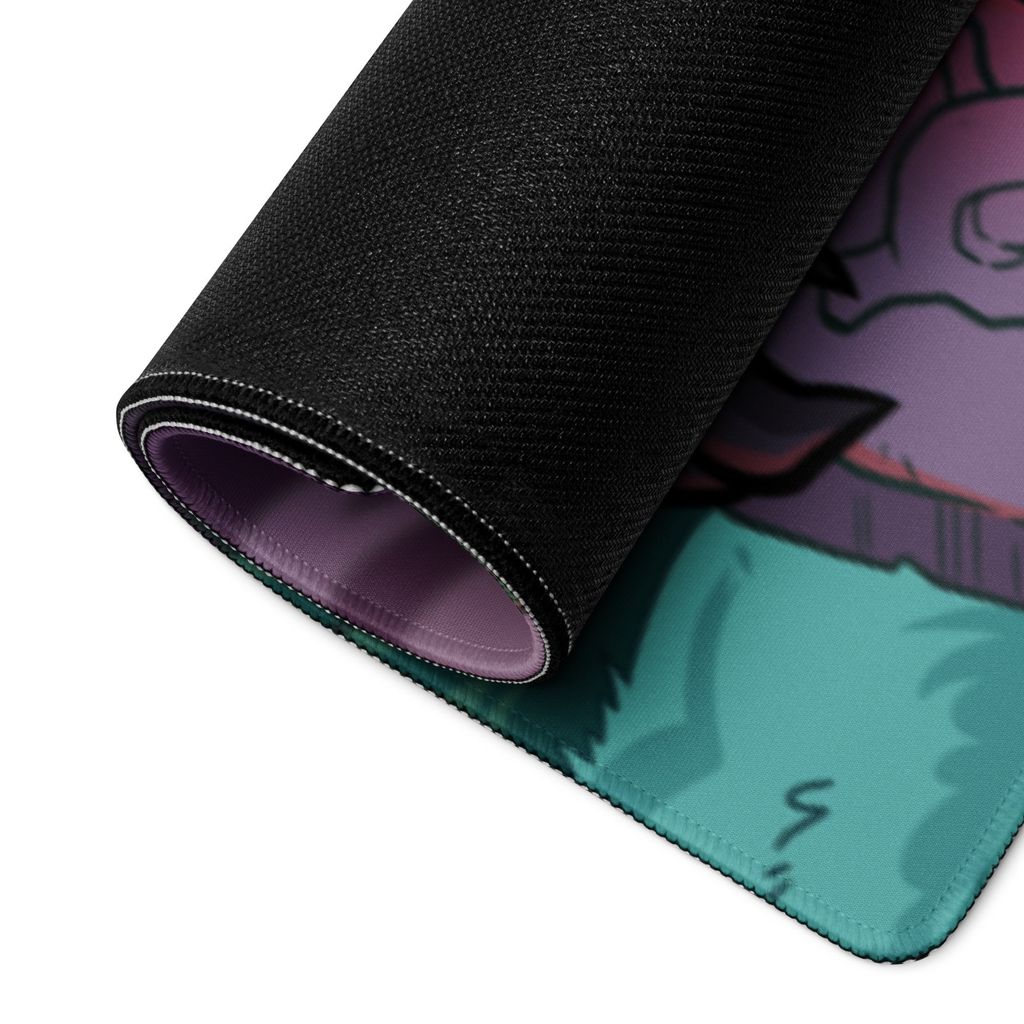
An Overview of Yoga Mat Materials
A yoga mat is an essential tool for practicing yoga. It provides cushioning and grip to ensure stability and comfort during yoga poses and exercises. There are various types of yoga mat materials available, each with its own unique characteristics and benefits. In this article, we will provide an overview of different yoga mat materials, including natural, synthetic, and eco-friendly options.
Key Takeaways
- Yoga mats are essential for practicing yoga as they provide cushioning and grip.
- There are different types of yoga mat materials, including natural, synthetic, and eco-friendly options.
- Natural yoga mat materials include cork, rubber, and jute.
- Synthetic yoga mat materials include PVC, TPE, and NBR.
- Eco-friendly yoga mat materials include biodegradable, recycled, and natural rubber options.
What is a Yoga Mat?
The Purpose of a Yoga Mat
A yoga mat is an essential tool for practicing yoga. It provides a stable and comfortable surface for performing various yoga poses and exercises. The main purpose of a yoga mat is to prevent slipping and provide cushioning for the body. By using a yoga mat, practitioners can maintain proper alignment, improve balance, and reduce the risk of injuries. Additionally, a yoga mat creates a personal space for individuals to focus on their practice and connect with their body and mind.
Benefits of Using a Yoga Mat
Using a yoga mat provides several benefits that enhance your yoga practice:
-
Improved Stability: A yoga mat provides a stable and non-slip surface, allowing you to maintain proper alignment and balance during poses.
-
Cushioning and Support: The cushioning provided by a yoga mat helps protect your joints and provides support for your body during various yoga movements.
-
Hygiene: Using your own yoga mat ensures cleanliness and reduces the risk of coming into contact with germs or sweat from others.
-
Comfort: The soft and comfortable surface of a yoga mat enhances your overall yoga experience, making it more enjoyable and relaxing.
-
Portability: Yoga mats are lightweight and easy to carry, making them convenient for practicing yoga anywhere, whether at home, in the studio, or outdoors.
-
Durability: Investing in a high-quality yoga mat ensures its longevity, allowing you to use it for a long time without wear and tear.
Choosing the Right Yoga Mat
When it comes to choosing the right yoga mat, there are a few factors to consider. Durability is an important aspect to look for in a yoga mat, as you want it to last through many yoga sessions. Additionally, thickness is another factor to consider. A thicker mat can provide more cushioning and support, while a thinner mat can offer better stability and balance. It's also important to consider the material of the yoga mat. Each material has its own unique qualities and benefits.
To help you make an informed decision, here is a comparison table of different yoga mat materials:
| Material | Pros | Cons |
|---|---|---|
| Cork | Natural and sustainable | Less cushioning |
| Rubber | Excellent grip | Strong odor initially |
| Jute | Eco-friendly | Prone to wear and tear |
Remember, the right yoga mat for you will depend on your personal preferences and needs. Take the time to try out different materials and thicknesses to find the perfect mat for your yoga practice.
Natural Yoga Mat Materials
Cork Yoga Mats
Cork yoga mats are a popular choice among yogis for several reasons. First, cork is a natural and sustainable material, making it an eco-friendly option. Second, cork mats provide excellent grip and traction, ensuring stability during yoga poses. Third, cork is antimicrobial, which means it resists the growth of bacteria and odors. This makes cork mats hygienic and easy to clean. Finally, cork mats are lightweight and easy to carry, making them convenient for yogis on the go.
Rubber Yoga Mats
Rubber yoga mats are a popular choice among yogis due to their excellent grip and durability. Made from natural rubber, these mats provide a stable and non-slip surface for practicing various yoga poses. They are also known for their eco-friendly properties as natural rubber is a renewable and sustainable material. Rubber yoga mats are suitable for both beginners and experienced practitioners, offering comfort and support during yoga sessions. Yune Yoga offers a variety of yoga mats made from natural rubber. They provide free shipping, eco-friendly products, and a satisfaction guarantee. Shop their collections online.
Jute Yoga Mats
Jute yoga mats are made from natural jute fibers, which are woven together to create a durable and eco-friendly mat. Jute is a sustainable material that is biodegradable and renewable, making it a popular choice among environmentally conscious yogis. These mats provide excellent grip and traction, allowing practitioners to hold poses with stability and confidence. Jute yoga mats are also known for their natural anti-slip properties, ensuring that yogis can maintain their balance during their practice. Additionally, jute mats are lightweight and easy to carry, making them convenient for yogis on the go.
Synthetic Yoga Mat Materials
PVC Yoga Mats
PVC yoga mats are a popular choice among yogis due to their durability and affordability. These mats are made from polyvinyl chloride, a synthetic material that provides excellent grip and cushioning. PVC mats are known for their longevity and can withstand regular use without wearing out quickly. They are also easy to clean and maintain, making them a convenient option for those who practice yoga frequently. However, it is important to note that PVC is not an eco-friendly material and may contain harmful chemicals. It is recommended to look for PVC mats that are free from phthalates and other toxic substances.
TPE Yoga Mats
TPE yoga mats are a popular choice among yogis due to their durability and eco-friendly properties. TPE stands for thermoplastic elastomer, which is a synthetic material that is recyclable and biodegradable. These mats are often made from a blend of TPE and other materials, such as rubber or cork, to enhance their performance.
One of the key advantages of TPE yoga mats is their excellent grip. The material provides a non-slip surface, allowing yogis to maintain stability and balance during their practice. Additionally, TPE mats are lightweight and easy to carry, making them ideal for yogis who are always on the go.
In terms of care and maintenance, TPE yoga mats are relatively easy to clean. They can be wiped down with a damp cloth or sprayed with a mild yoga mat cleaner. It is important to avoid using harsh chemicals or abrasive scrubbers, as these can damage the material.
Overall, TPE yoga mats are a versatile and eco-friendly option for yogis of all levels. Whether you're a beginner or an experienced practitioner, a TPE mat can provide the comfort, stability, and grip you need to enhance your yoga practice.
NBR Yoga Mats
NBR (Nitrile Butadiene Rubber) yoga mats are a popular choice among yogis for their excellent cushioning and durability. These mats provide a comfortable and supportive surface for yoga practice, making them ideal for those who need extra joint support or have sensitive knees.
NBR yoga mats are known for their slip-resistant properties, ensuring stability and preventing injuries during poses. They offer a good grip even when wet, making them suitable for hot yoga or sweaty workouts.
One important consideration when using NBR yoga mats is their maintenance. It is recommended to clean them regularly with a mild soap and water solution to prevent the buildup of sweat and bacteria.
If you're looking for a yoga mat that offers both comfort and stability, NBR yoga mats are a great option to consider.
Eco-Friendly Yoga Mat Materials
Biodegradable Yoga Mats
Biodegradable yoga mats are an environmentally friendly option for yogis who are conscious of their carbon footprint. These mats are made from natural materials that can decompose over time, reducing their impact on the environment. Cork, natural rubber, and jute are commonly used materials for biodegradable yoga mats.
When choosing a biodegradable yoga mat, it's important to consider the material's durability and grip. Cork yoga mats, for example, offer excellent grip and are resistant to moisture, making them ideal for hot yoga practices. Natural rubber mats provide good cushioning and are suitable for various types of yoga. Jute mats are lightweight and offer a natural texture that enhances grip.
Here is a comparison table of the different biodegradable yoga mat materials:
| Material | Durability | Grip | Moisture Resistance |
|---|---|---|---|
| Cork | High | High | High |
| Natural Rubber | High | Medium | Medium |
| Jute | Medium | High | Low |
Remember, biodegradable yoga mats require proper care and maintenance to prolong their lifespan. Avoid exposing them to direct sunlight for extended periods and clean them regularly with a mild detergent.
Tip: To enhance the grip of a jute yoga mat, lightly spray it with water before starting your practice.
Recycled Yoga Mats
Recycled yoga mats are an eco-friendly option for yogis who want to reduce their environmental impact. These mats are made from recycled materials such as old tires, plastic bottles, or other post-consumer waste. By repurposing these materials, recycled yoga mats help to reduce the amount of waste that ends up in landfills or oceans. They also help to conserve natural resources by using materials that would otherwise be discarded. Recycled yoga mats are just as durable and supportive as traditional mats, making them a great choice for both beginners and experienced yogis.
Natural Rubber Yoga Mats
Natural rubber yoga mats are a popular choice among yogis due to their excellent grip and cushioning. Made from the sap of rubber trees, these mats are eco-friendly and biodegradable. They provide a stable and non-slip surface, allowing practitioners to hold poses with confidence. Natural rubber mats are also known for their durability, making them a long-lasting investment for your yoga practice.
Eco-Friendly Yoga Mat Materials
Conclusion
In conclusion, this article provided an overview of yoga mat materials. We explored the different types of materials commonly used in yoga mats, including natural rubber, PVC, TPE, and cork. Each material has its own unique characteristics and benefits, catering to different preferences and needs. It is important for practitioners to consider factors such as durability, grip, eco-friendliness, and comfort when choosing a yoga mat. By understanding the pros and cons of each material, individuals can make an informed decision that aligns with their personal values and enhances their yoga practice.
Frequently Asked Questions
How do I clean my yoga mat?
To clean your yoga mat, you can use a mixture of mild soap and water. Gently scrub the mat with a soft cloth or sponge, then rinse it thoroughly with clean water. Allow the mat to air dry before rolling it up for storage.
Can I use a yoga mat for other exercises?
Yes, you can use a yoga mat for various exercises such as Pilates, stretching, and meditation. Its cushioning and non-slip surface make it suitable for different types of workouts.
How often should I replace my yoga mat?
The lifespan of a yoga mat depends on its quality and usage. Generally, it is recommended to replace your yoga mat every 6-12 months or when you notice signs of wear and tear, such as thinning or flaking.
Are yoga mats eco-friendly?
Some yoga mats are eco-friendly, especially those made from natural and biodegradable materials. Look for mats labeled as eco-friendly or made from sustainable sources if you prioritize environmental consciousness.
Can I practice yoga without a mat?
While a yoga mat provides cushioning and stability, you can practice yoga without one. However, using a mat can enhance your comfort, prevent slipping, and provide a designated space for your practice.
What thickness should I choose for my yoga mat?
The ideal thickness of a yoga mat depends on personal preference and the type of yoga you practice. Thicker mats (around 5-6mm) offer more cushioning, while thinner mats (around 3-4mm) provide better stability and balance.


